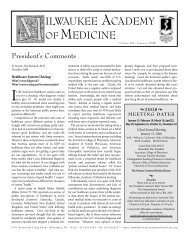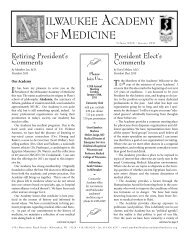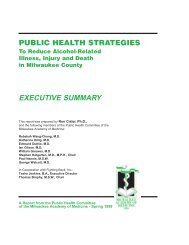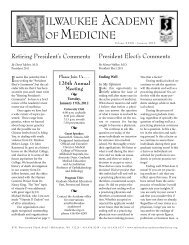Public Health Strategies To Reduce Tobacco-Related Illnesses and ...
Public Health Strategies To Reduce Tobacco-Related Illnesses and ...
Public Health Strategies To Reduce Tobacco-Related Illnesses and ...
Create successful ePaper yourself
Turn your PDF publications into a flip-book with our unique Google optimized e-Paper software.
5<br />
The primary host is the smoker or user of smokeless tobacco. The secondary host is<br />
anyone affected by environmental tobacco smoke (ETS). The host's age, education,<br />
gender, as well as other factors influence the effects of tobacco. Agent/vehicle refers to<br />
the heat <strong>and</strong>/or chemicals delivered by the tobacco product. Its influence may vary<br />
depending on amount, form, <strong>and</strong> type of tobacco, <strong>and</strong> whether it is inhaled as<br />
mainstream or sidestream (second-h<strong>and</strong>) smoke. Environment encompasses social or<br />
peer pressure, ease of access to tobacco, tax <strong>and</strong> economic climate, tobacco industry<br />
advertising, <strong>and</strong> promotions, lobbying activities, <strong>and</strong> the public policy arena.<br />
Each axis has characteristics that magnify or mitigate the occurrence of disease or death,<br />
<strong>and</strong> though distinct in the model, in reality, they interact among themselves. Thus,<br />
prevention <strong>and</strong> control strategies targeted to one axis affect all three.<br />
Table 2 shows the variety of factors to be considered in tobacco control efforts. For<br />
example, prohibiting the tobacco industry's distribution of free cigarettes may affect the<br />
number of cigarettes to which a host has access.<br />
TABLE 2: HOST, ENVIRONMENT, AGENT/VEHICLE CHARACTERISTICS<br />
ASSOCIATED WITH TOBACCO-RELATED ILLNESS AND DEATH<br />
MILWAUKEE ACADEMY OF MEDICINE WINTER, 1996








